Playing around with the DIY Smabat Proto is akin to building Lego blocks for audiophiles!
Have you ever wanted to solder or customize a pair of IEMs, but you do not have required DIY skills? Have you ever wanted to tune your own IEMs to your heart’s content, but do not have the necessary tools?
Enter the Smabat Proto 1.0. The Proto feature an innovative modular plug-and-play concept. Included is an array of bass and treble dampers to attach to the Proto’s shell, and one can purchase different replacement drivers. Swap and tinker to your satisfaction, there’s a mind-boggling amount of possible tuning permutations!
No soldering is required!
The Smabat Proto 1.0 are aptly named after protozoa, which come in a multitude of different shapes and sizes. This prototypical concept of a single species diverging to other branch species can be seen with the Proto, as the base shell just requires fitting the various components in to give a totally different sound signature!
- Solid build
- Good soundstage
- Innovative plug and play modular concept – no soldering is needed
- Mind-boggling permutations to play with in terms of treble/bass damper and aftermarket drivers to give different sonic signatures to suit different genres and preferences
- Stock tuning features a very balanced tonality with good technical performance
- Organic timbral accuracy
- Can be worn cable down or over ears
- Below average isolation
- Comfort may be hit or miss with the larger shells
- Aftermarket drivers need to be purchased separately
Company Overview
Smabat is a Chinese audio company that features unique patented designs and innovative concepts for their gear. They are actually better known for their earbuds than IEMs, and are quite a big player in the niche earbuds scene.
Most run-of-the-mill earbuds achilles’ heel is poor sub-bass. Some of the Smabat earbuds feature a labyrinth acoustic design that boost sub-bass much more than average, and can even get levels close to IEMs.
Smabat recently released the Smabat M0 and the M2s Pro earbuds, both of which feature a similar plug and play modular concept, with various dampers and drivers that one can swap into the shell, without soldering.
Smabat has some other well received earbuds in their stable, including the Smabat ST10S Black Gold and Black Silver, and the original Smabat ST10 (which is sadly no longer in production). They also released a few cult favourite IEMs such as the X1, Black Bat and NCO.
Technical Specifications
- Form: IEMs
- Drivers: 1 x 10mm Titanium Diaphragm driver (stock driver); various alternative drivers are available for purchase
- Impedance (Ohm): 16 Ω
- Sensitivity (dB): 110 dB/mW
- Frequency Response (Hz): 10 Hz – 22 KHz
- Removable Cable: Y
- Cable: Unfortunately, there are no provided details on the materials used for the cable
- Cup/Shell Plug: MMCX
- Mic: N
Packaging
The Proto come in a small navy blue outer packaging. Opening it reveals an inner white box with their bat logo and the words “smart bat”.
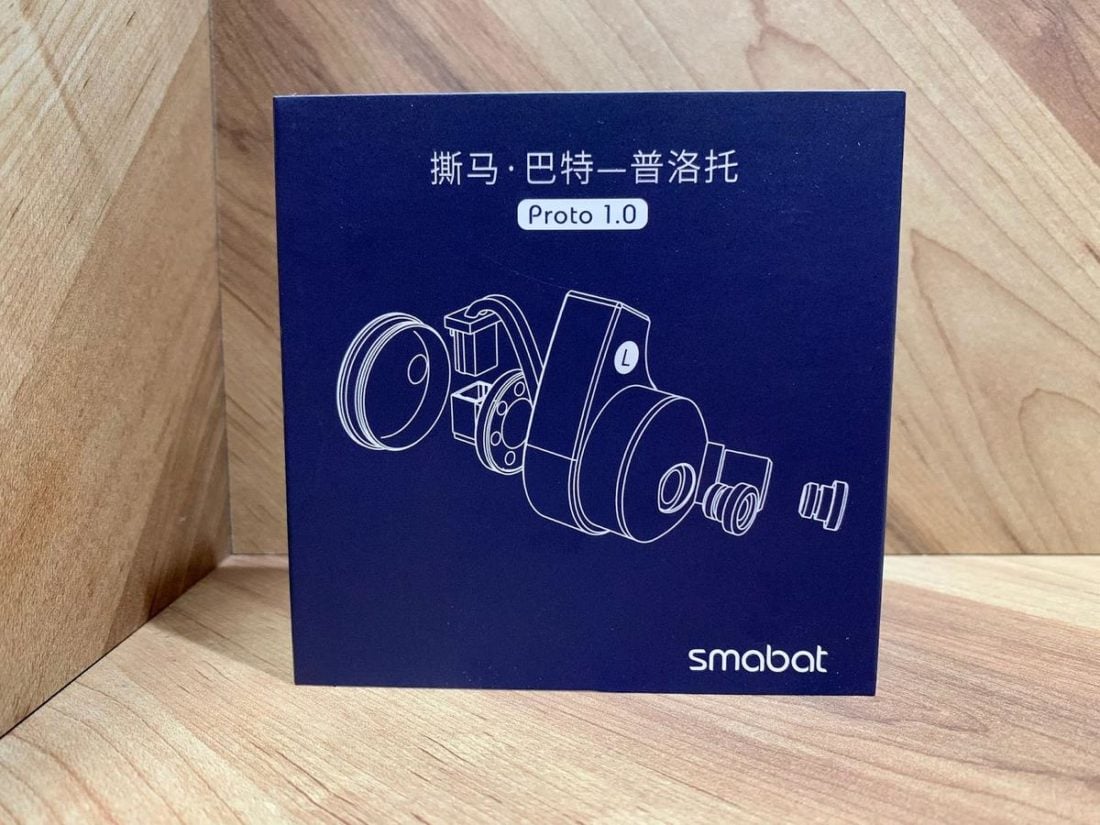
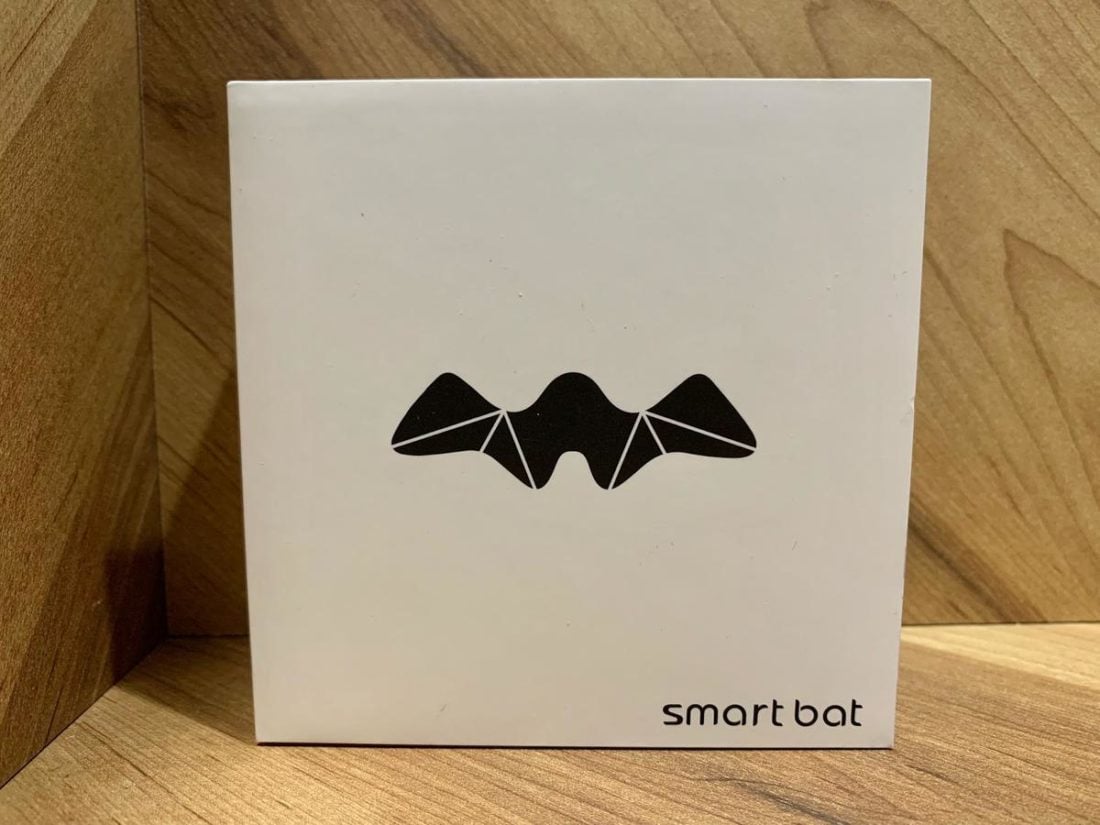
In the box
- SMABAT Proto 1.0 IEMs
- 3 pairs of silicone ear tips (S, M, L)
- Tweezer
- Cable
- Leatherette pouch
- Various dampers
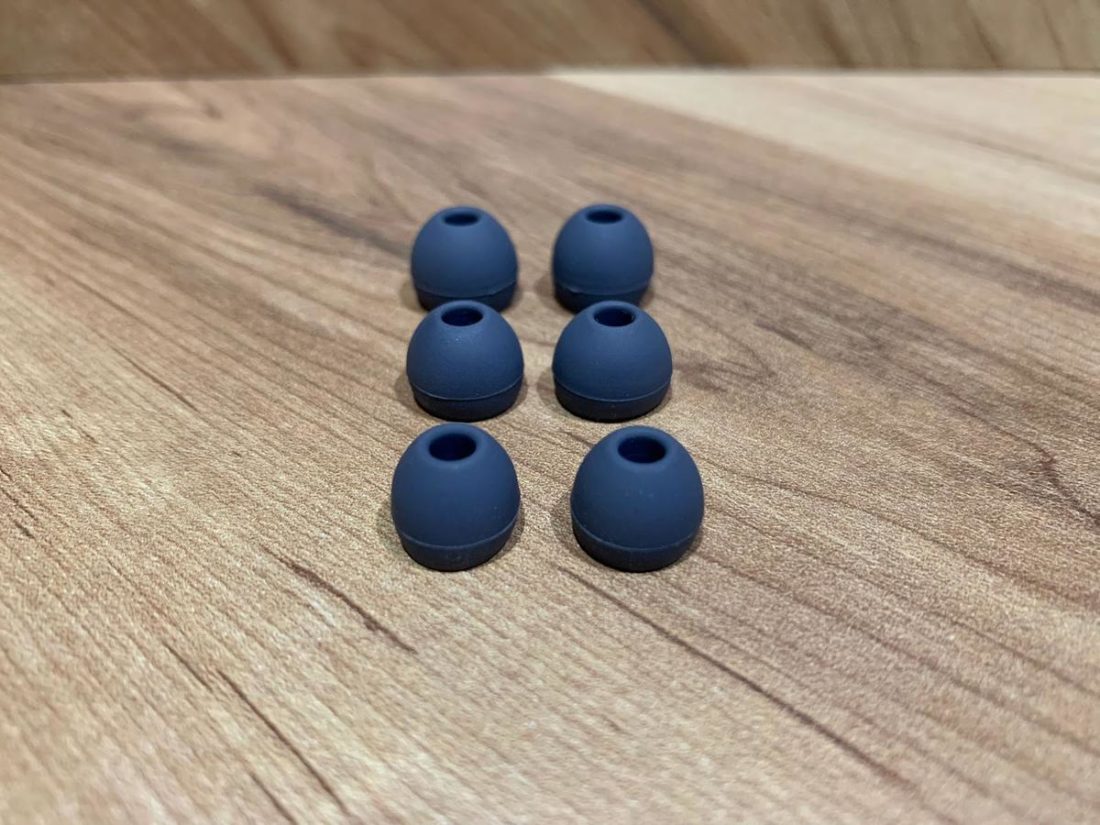
Even Batman would be pleased with the provided toolkits to modify the Proto’s tuning.
Cable
The provided cable has zero microphonics, and is quite nice haptically, though it may be a bit tangly.
Well I am not a fan of MMCX connectors in general, due to their shorter lifespan with frequent cable changes. Thankfully, the MMCX quality here seems quite good, both earpieces lock into the cable with a good click without too much spinning or being too tight.
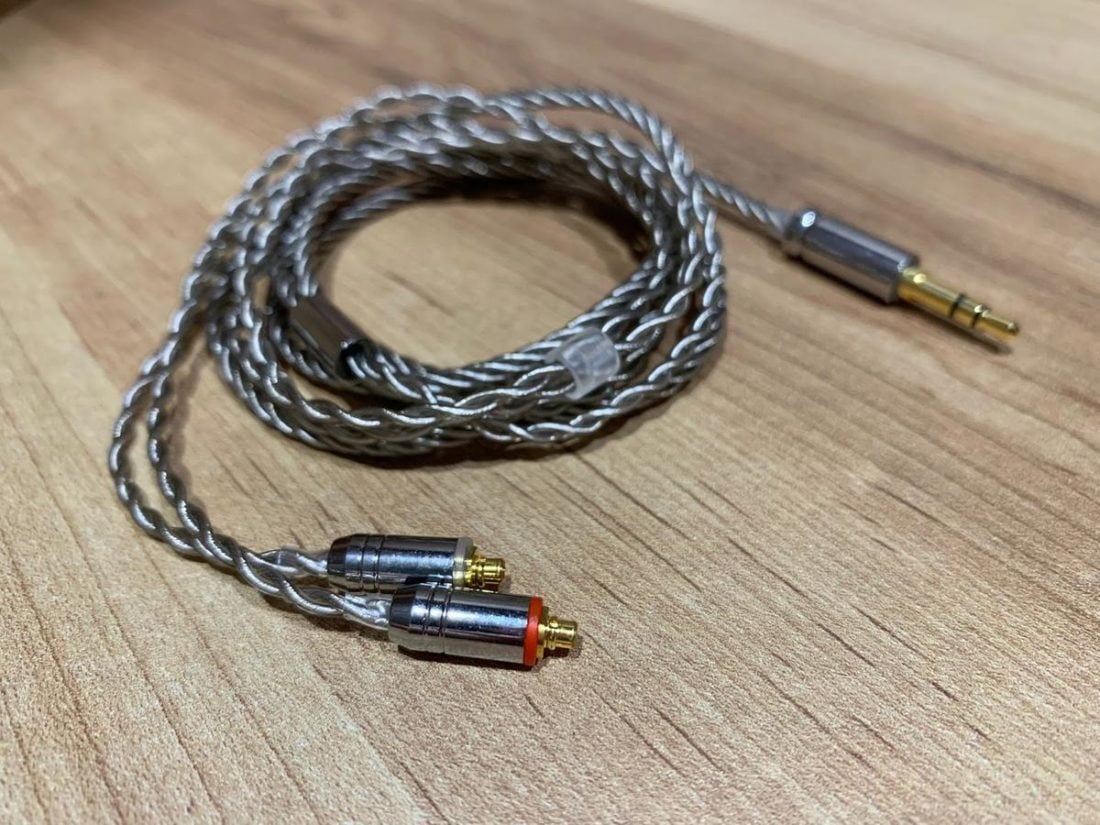
Case
The included leatherette pouch has the Smabat words emblazoned on it, and it looks quite elegant.
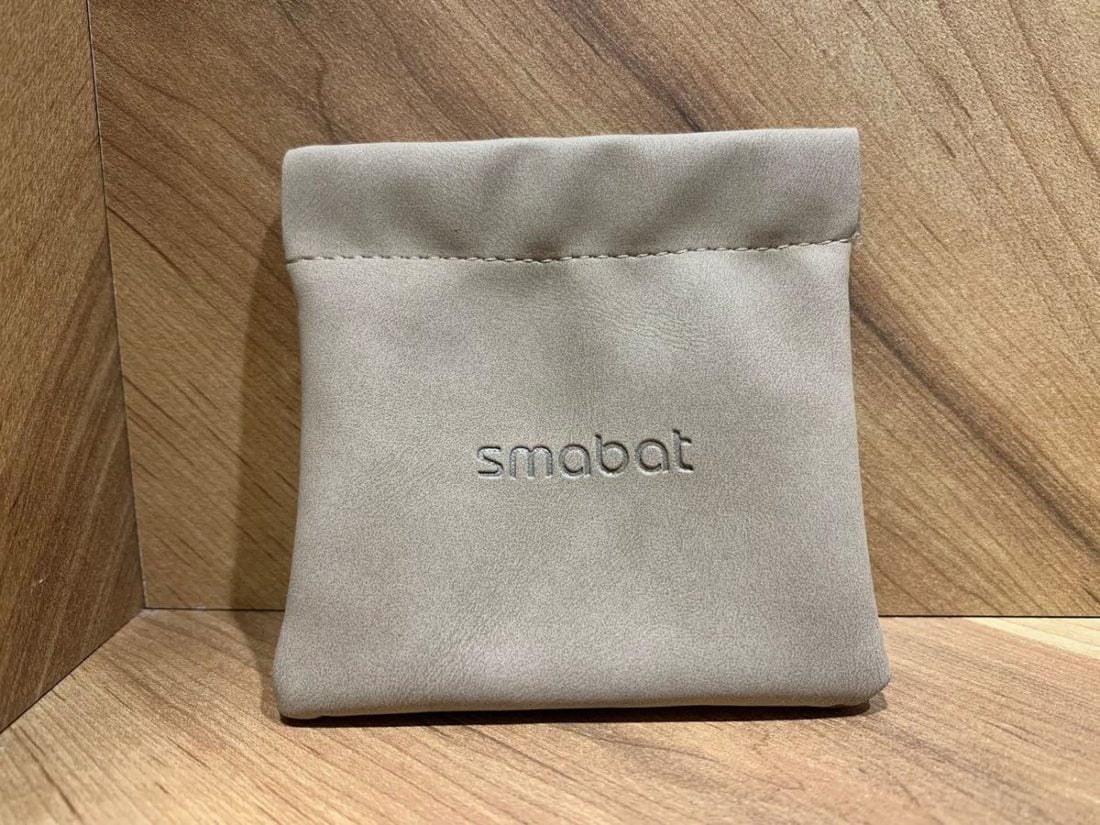
Design
In keeping with the modifiable concept of the Smabat Proto 1.0, the shells are quite industrial looking, and probably would not win any beauty awards. Different strokes for different folks, but I would take a good sounding IEM with average looks over a beautiful IEM with bad sound.
Thankfully, the Proto fall in the former category, which we will talk about below.
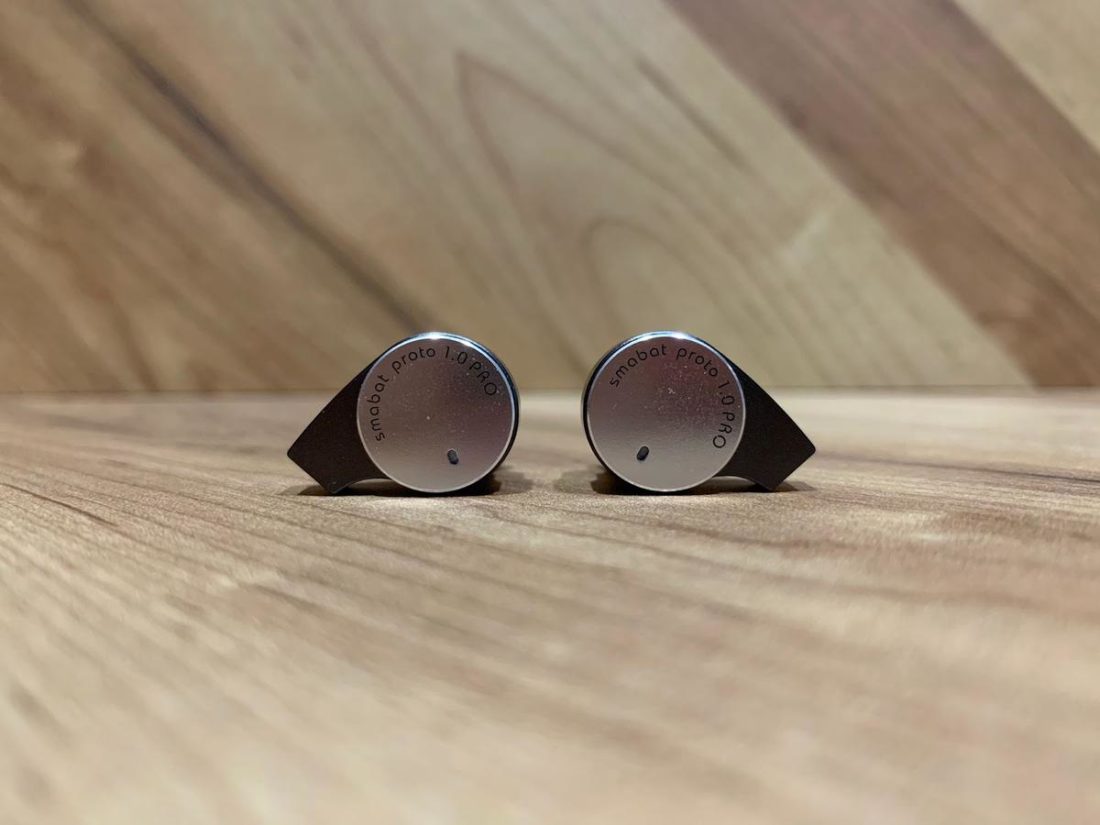
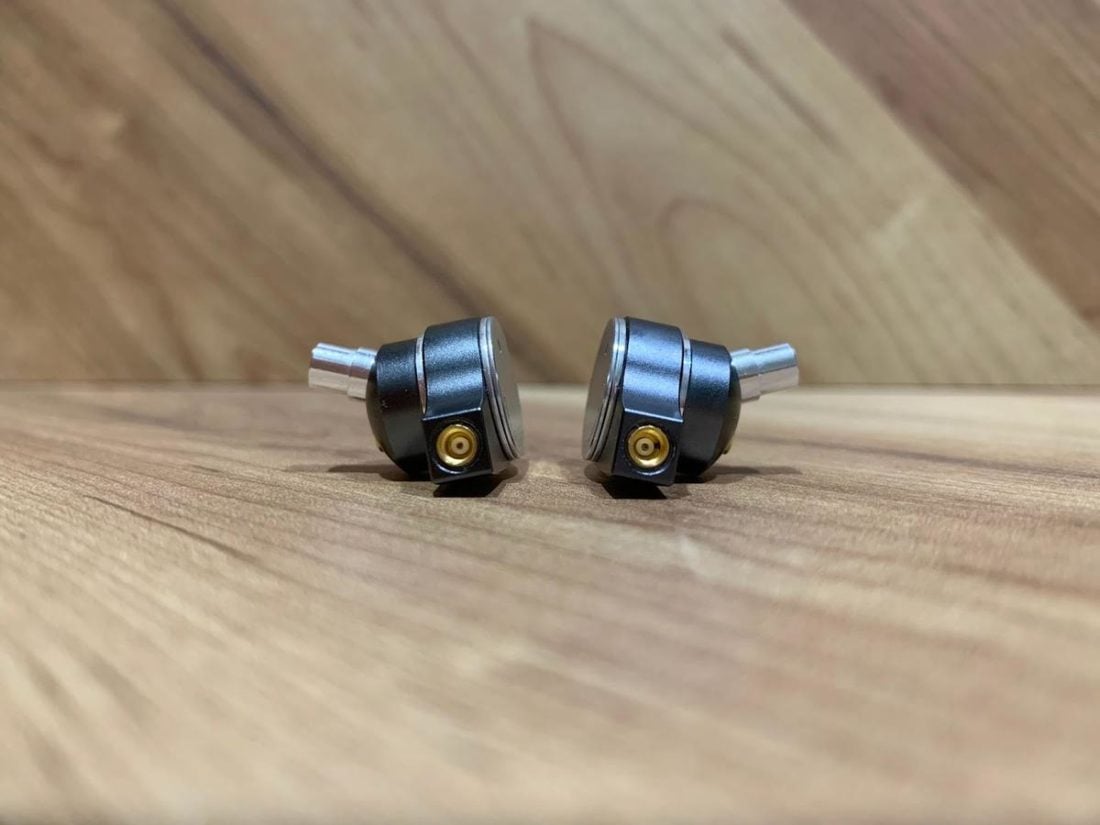
Isolation on the Proto is unfortunately below average due to the open-back design. This is a double-edged sword, as they do provide a good soundstage, though at the expense of isolation.
Comfort
The Proto are quite sturdy yet light, though they lie on the larger side and comfort may be hit or miss due to the size. I foresee some with smaller ears may find them less ergonomic, though I have used them for marathon-long sessions without much discomfort.
I didn’t experience any driver flex, but driver flex is partially dependent on ear anatomy and the types of tips used, so it is a YMMV situation.
Internals
The included driver in the Smabat Proto 1.0 is a 10mm titanium diaphragm driver, but there are various aftermarket drivers that are available for purchase, which we will talk about below.
The stock driver is quite easy to drive, but like most dynamic drivers, this driver scales better when amplification is used.
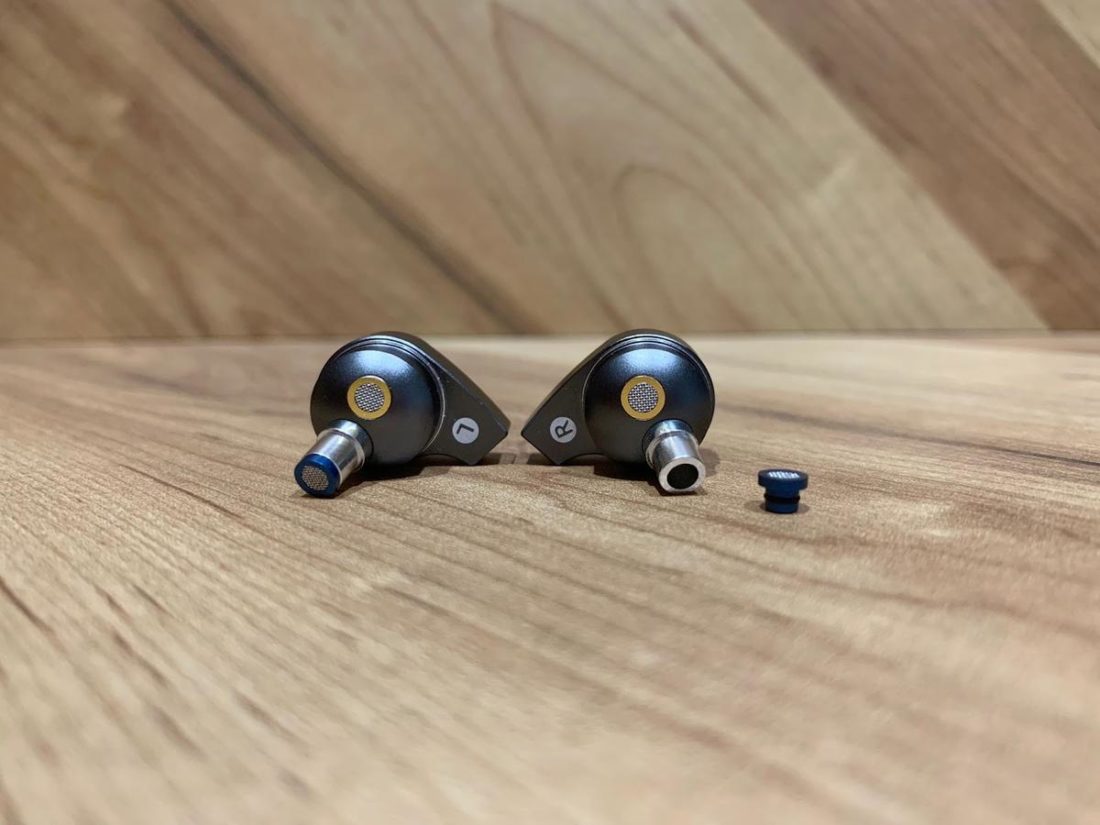
Smabat Proto 1.0 Sound
With the stock configuration (10 mm titanium driver, no treble damper and the golden bass damper), I would describe the Proto as having a U-shaped balanced signature. Timbral accuracy is excellent as per this driver’s single DD roots. Soundstage has good width and depth, while soundstage height is about average. Imaging, layering and instrument separation are good, assisted by the big soundstage.
On this stock tuning, mid-bass is north of neutral, punchy and clean, with minimal mid-bass bleed. Sub-bass extension and rumble is good. Bass timbre and texture is excellent.
With this configuration, treble and upper mids are forward but without going into shouty territory. Sibilance is mild. The Proto aren’t an analytical or hyper-detailed set, but everything sounds natural and organic. Cymbals sound as they should, some budget CHI-FI counterparts can sound jarring and splashy in contrast.
The above sound impressions are just with the stock configuration. There’s many more permutations to play with!
We will be discussing the various dampers and aftermarket drivers below, adding or removing these can change the prototypical protozoa into various other forms! Let me assure you, this set’s tuning dampers really work, they ain’t gimmicks!
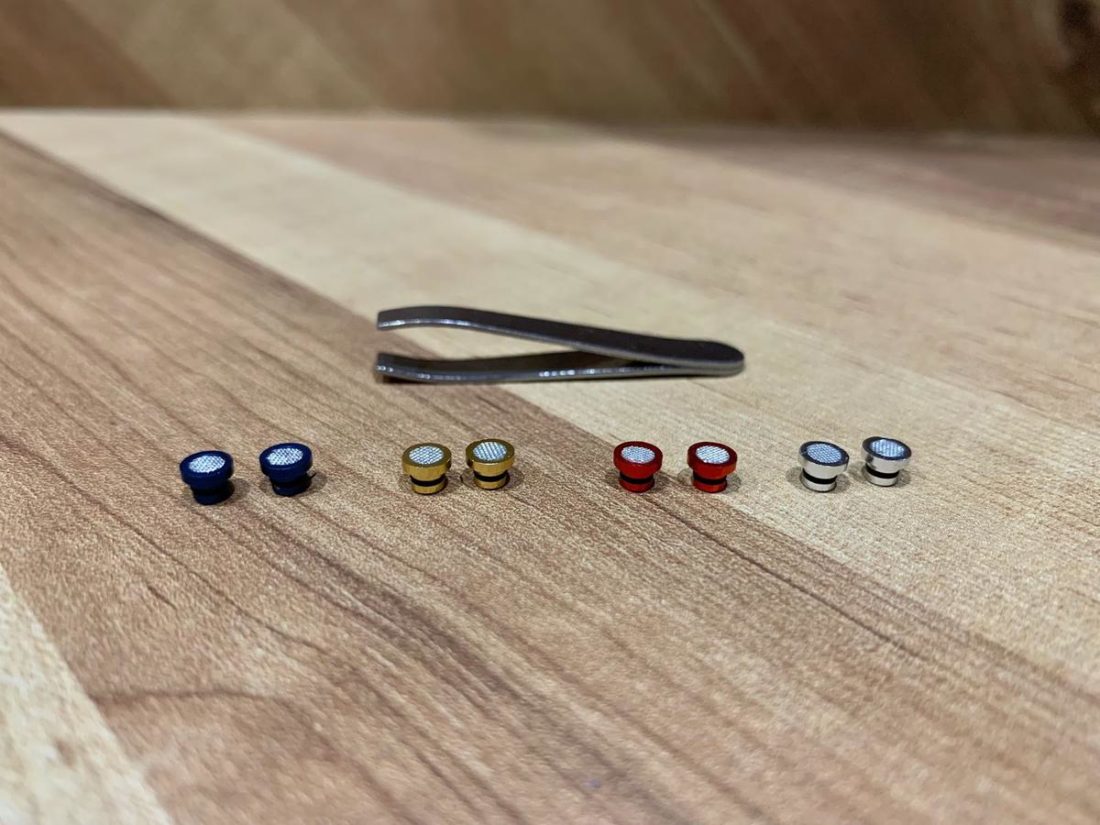
There are four dampers included with the Proto 1.0 – one treble damper (blue), and three bass dampers (red, silver, gold).
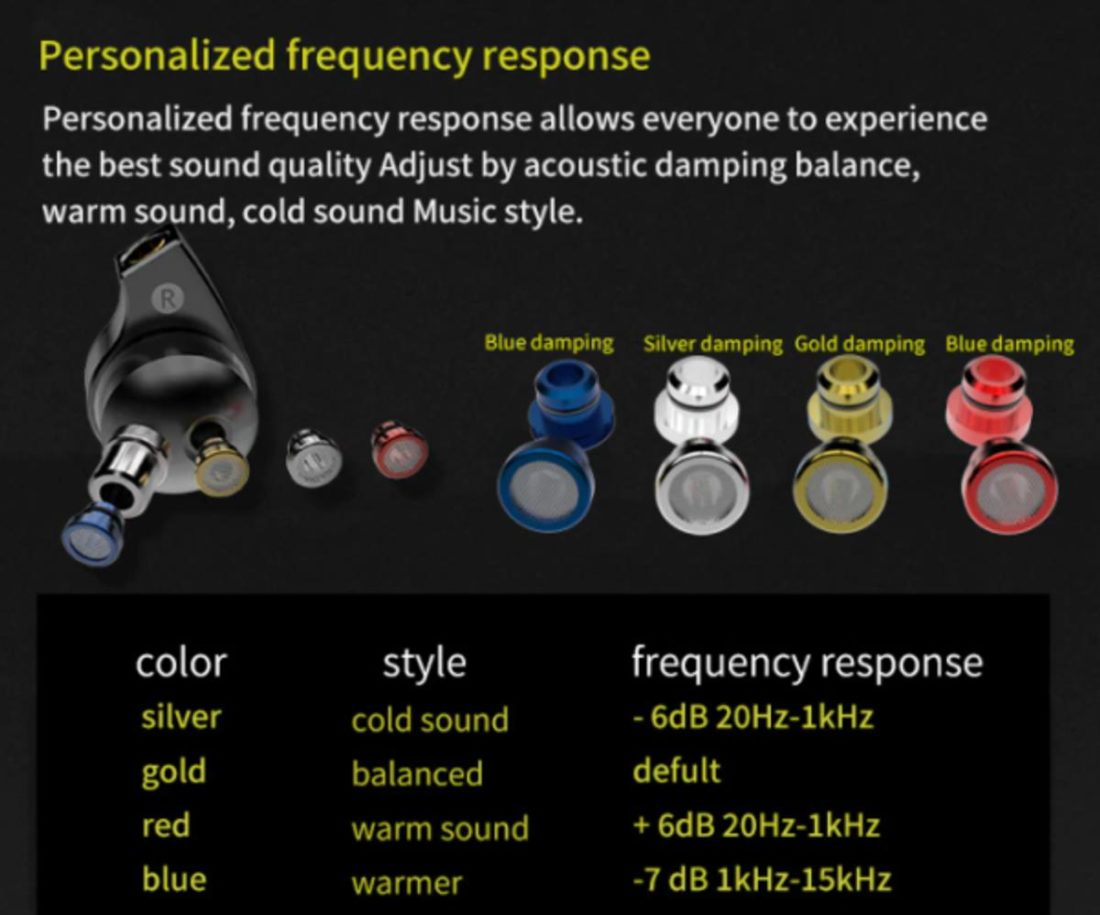
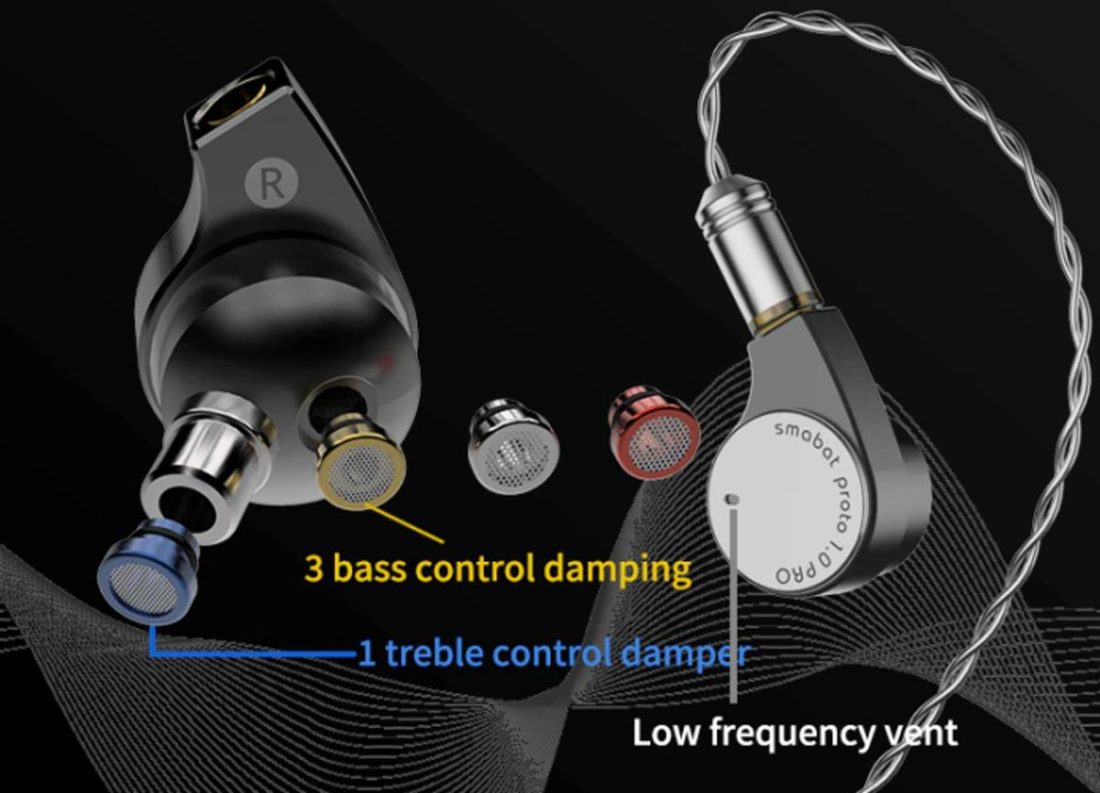
In addition to the dampers, there are 3 additional aftermarket drivers one can buy. And if one adds different eartips, sources, and even cables (for our cable believers) to the equation, then the various sound permutations are really mind-boggling.
Changing treble dampers
The first potential area of modification is with the treble damper at the Proto’s nozzle. This involves using the blue damper, or having no damper in the nozzle. Without any treble damper, the upper mids and lower treble are boosted. With the blue damper installed, this area is tamed.
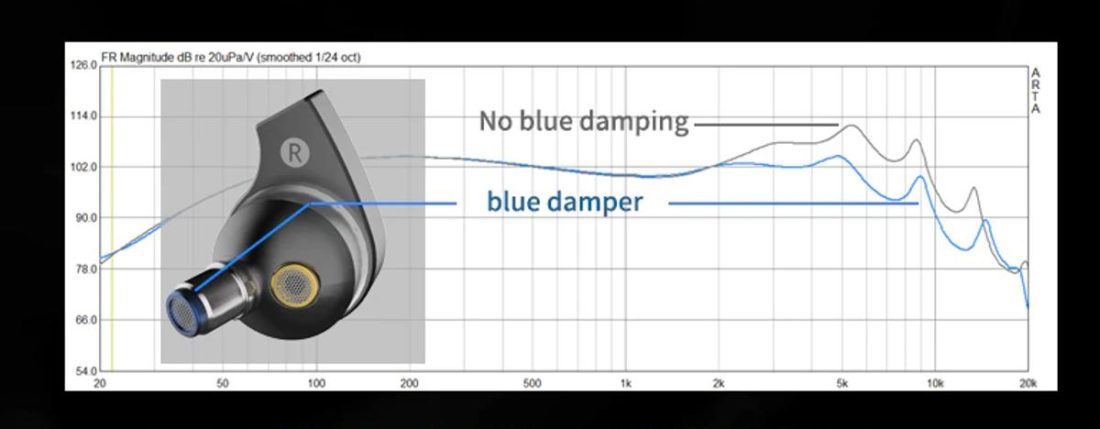
Changing bass dampers
The next possible area to modify is via the bass dampers. This is done by just sliding the gold, silver or red dampers into the bass damper hole.
As per the store provided graph below, the silver damper gives the least bass (around neutral levels of bass), the red damper gives the most bass (basshead levels with some mid-bass bleed), and the golden damper is a midpoint of just being north of neutral.
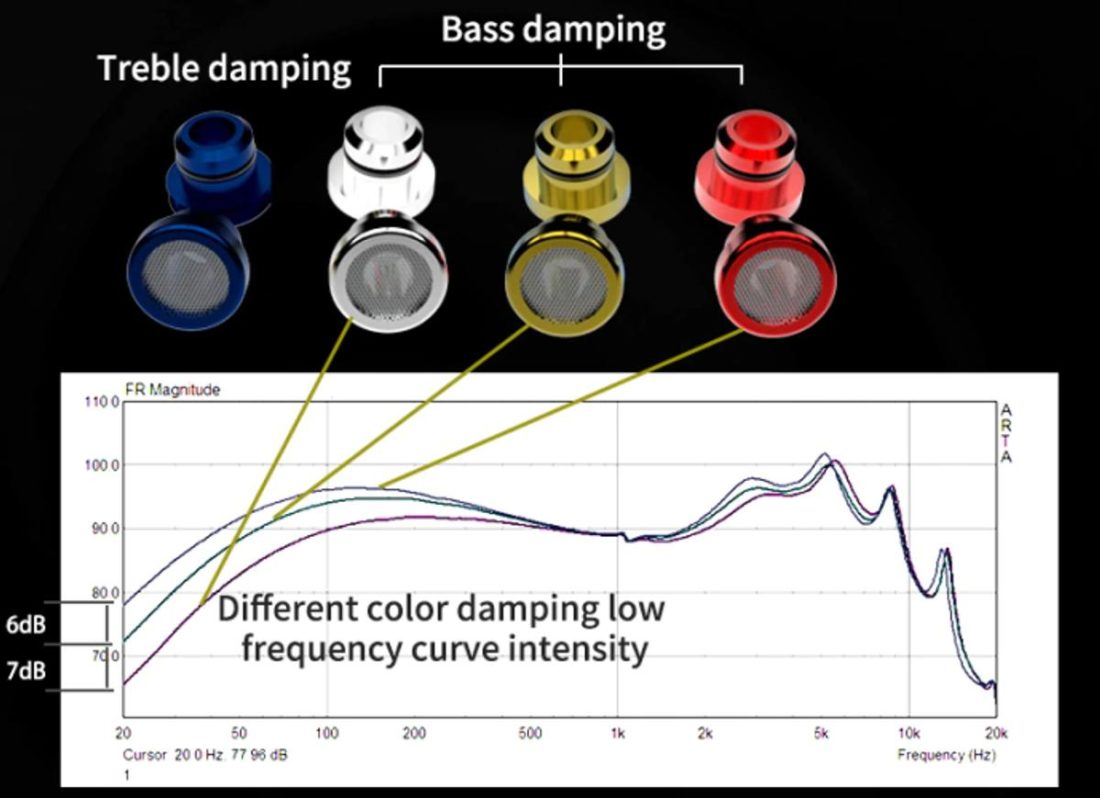
Sound impressions – treble damper ON
| Bass Damper | Sound permutations with treble damper ON - ie blue damper is on the IEM nozzle. |
|---|---|
| Silver | This tuning is cold neutral and rather flat. Bass lies at neutral levels with an anemic sub-bass. Midrange is also neutral. Music may sound boring with this configuration, with some lack in pinna gain and dynamics. |
| Gold | This damper gives a midpoint between the silver and red bass dampers, and the bass quantity is just slightly north of neutral with a tickle of sub-bass rumble. The sound is rather balanced with a mild U-shaped tuning. Vocals take a slight backseat and music is very non fatiguing. |
| Red | This gives an L-shaped tuning that will delight our basshead brethren. Sub-bass can give a robust jaw-rattling visceral rumble. Mid-bass unfortunately does bleed and encroaches into the midrange. Vocals are furthest in the background with this configuration. Clarity takes a hit and music can be a bit muddy. |
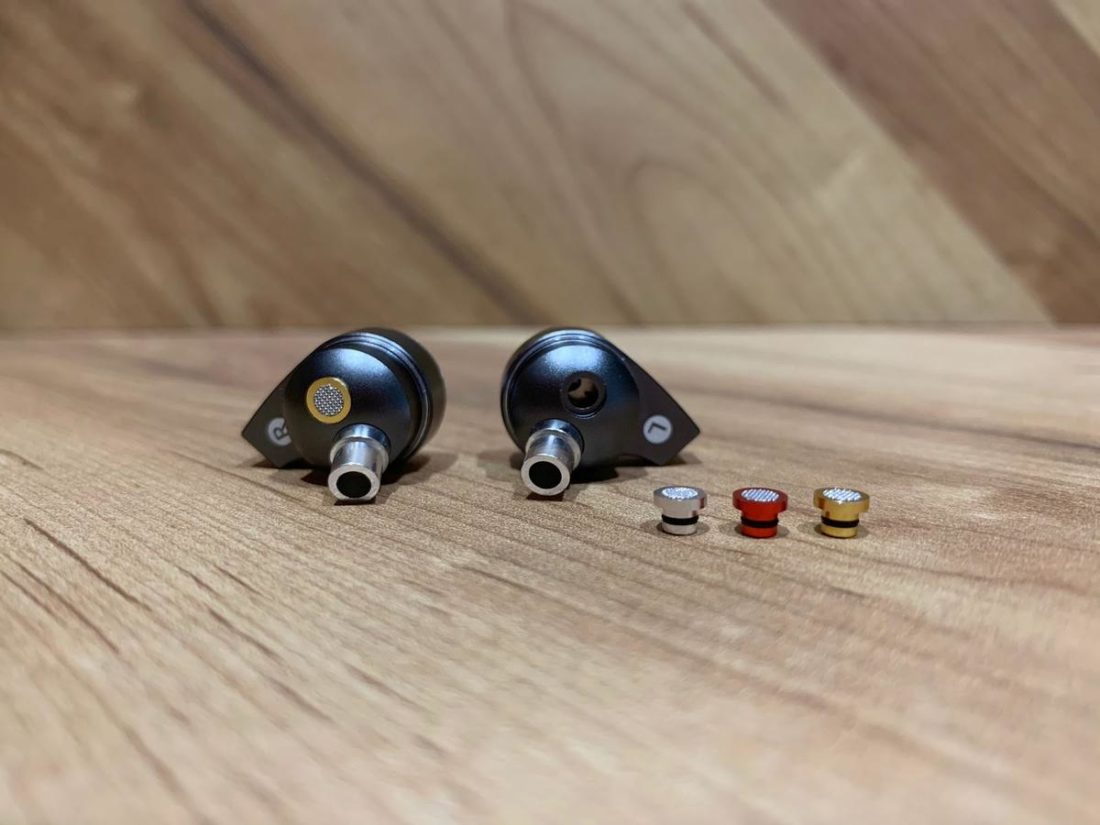
Sound impressions – treble damper OFF
| Bass Damper | Sound permutations with treble damper OFF - ie no blue damper on the IEM nozzle. |
|---|---|
| Silver | Bass is neutral with this configuration, giving a neutral bright tuning due to a lack of mid-bass warmth. Sub-bass rolls off early. Would be a good option for vocal and acoustic music lovers and those that prefer a thinner lower midrange. |
| Gold | This is the default configuration of the Proto, giving a balanced U-shaped tonality. Bass is just north of neutral, with moderate sub-bass rumble. Vocals and upper mids/lower treble are forward without veering into shouty territory. |
| Red | This configuration gives a V-shaped tuning with the bass approaching basshead amounts. Sub-bass extends well with good rumble and extension. Mid-bass bleeds a bit, with a lot of warmth added to the lower midrange. Upper mids are also forward with some bite added. |
One can change the dampers with the provided tweezer, just grip the protruding part of the damper and wiggle it a bit. Here is a video on how to do it, many thanks to headfier axhng for his kind video demonstration here. It looks difficult but once you get the hang of it, these dampers can be swapped out in mere seconds.
Switching the dampers isn’t as easy as flipping switches on a tunable IEM, but in essence, once someone likes a particular sound signature, I think we will just keep to that tuning config and not make regular changes.
I do foresee however, that those with weaker eyesight or poorer coordination might have issues changing the dampers, but practice makes perfect. Do explore the various dampers and see what suits your music library or preferences; personally I’m a fan of the stock configuration.
The stock configuration is with the golden bass damper without any treble damping, and this is my favorite combination.
So far we have only talked about the dampers. Are you still adventurous for more tinkering?
Changing drivers
The Proto drivers can be also changed, though these are sold separately on the Smabat Aliexpress shop or their official store. The different aftermarket drivers and their graphs are described below:
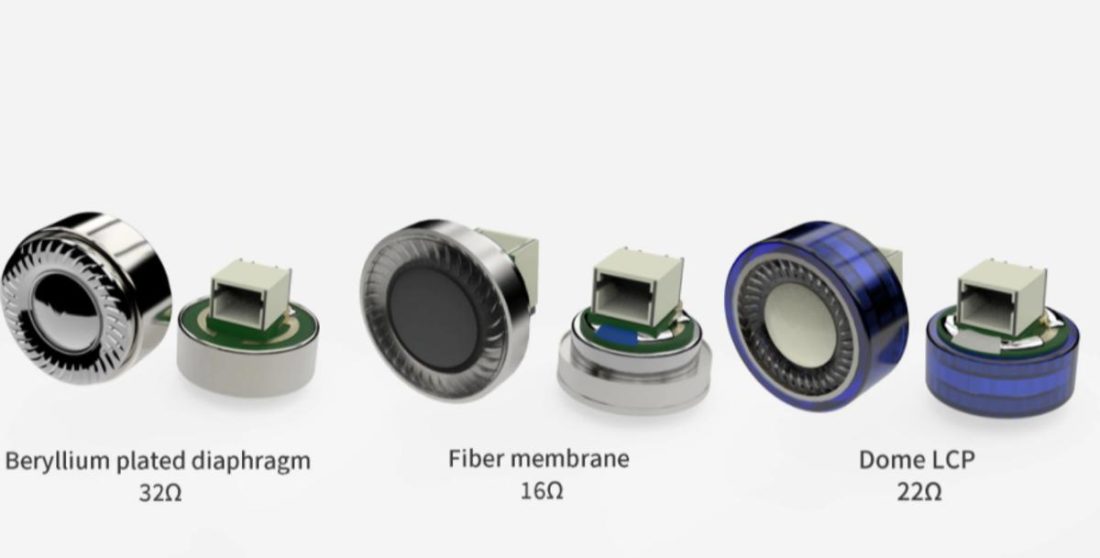
The driver can be changed by removing the front panel on the IEM, here’s a video from SMABAT on how to do it.
Driver comparison
I purchased the aftermarket red fiber membrane, and did my comparisons against the stock titanium driver using the golden bass damper without any treble dampers, with the same source and volume.
| Driver | Description | Listening Notes |
|---|---|---|
| Stock titanium (16 Ohms) | Using this stock driver gives a balanced sound with faster transients | This stock driver is very balanced sounding, giving a good mix of technicalities, timbre and tonality. |
| Beryllium plated (32 Ohms) | “The three frequency bands of treble, midrange and bass are average and natural, suitable for various types of music styles.” | Pending delivery |
| Fiber membrane (16 Ohms) | “Strengthen the output of high frequency and low frequency, have protruding bass and have very good treble.” | This driver gives a more recessed midrange, with blunted transients and more rounded note edges. This fiber membrane driver is slower compared to the stock titanium one, and perhaps fans of a more chill and relaxed signature would prefer this driver. |
| Dome LCP (22 Ohms) | “Enhanced high-frequency characteristics, with strong treble penetration.” | Pending delivery |
Where to Buy
Conclusion
Smabat brings the innovative concept of Lego combined with IEMs with the Smabat Proto 1.0. Everything is plug and play and no soldering or DIY skills are needed, creating accessibility for the masses.
The Proto can easily be seen as a jack-of-all-trades, but they are very competitive in terms of technical performance and timbral accuracy when compared with other single DD sets at this price.
The stock tuning on the Proto is excellent, featuring a big soundstage, good imaging and layering, coupled with a natural timbre and balanced tonality. It is my favored configuration. However, that’s just scratching the surface, the tip of the iceberg so to speak, as there’s many other areas to play with in terms of dampers and aftermarket drivers to influence the sound.
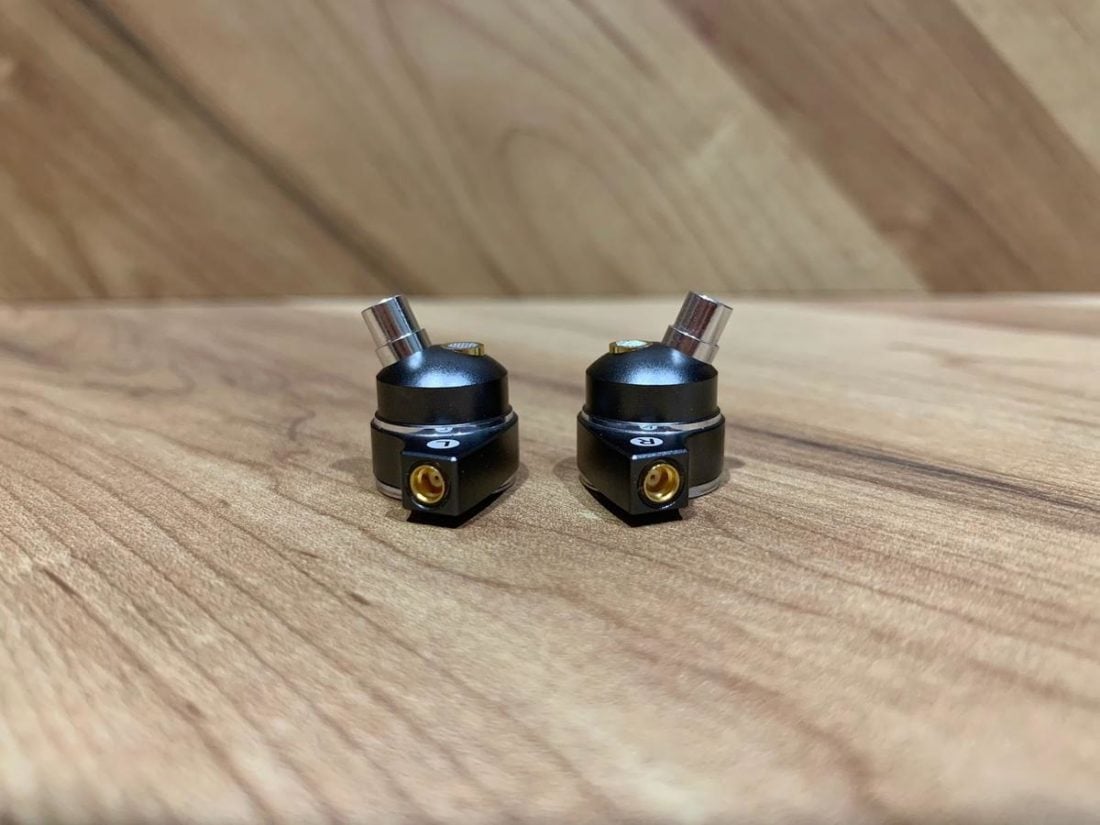
Once the protozoa of the stock configuration takes on different dampers and drivers, a different beast evolves to greet you!
Basshead tuning? Check. Neutral tuning? Check. Balanced tuning? Check. Treble boost? Check. The Proto offer all these, and more.
This set is definitely different from the hackneyed V-shaped and harman sidegrades that are released each week in the CHI-FI market. Using the various dampers and drivers, the Proto have the versatility to suit different music genres and sonic preferences.
One might even save money with the Proto. Instead of buying multiple IEMs, one can just keep the shell and accessories, and just feed the protozoa inside with a different driver or damper to get a different beast. The sky is really the limit with the Proto, and I do think most of us will find something to like with the various tuning permutations!
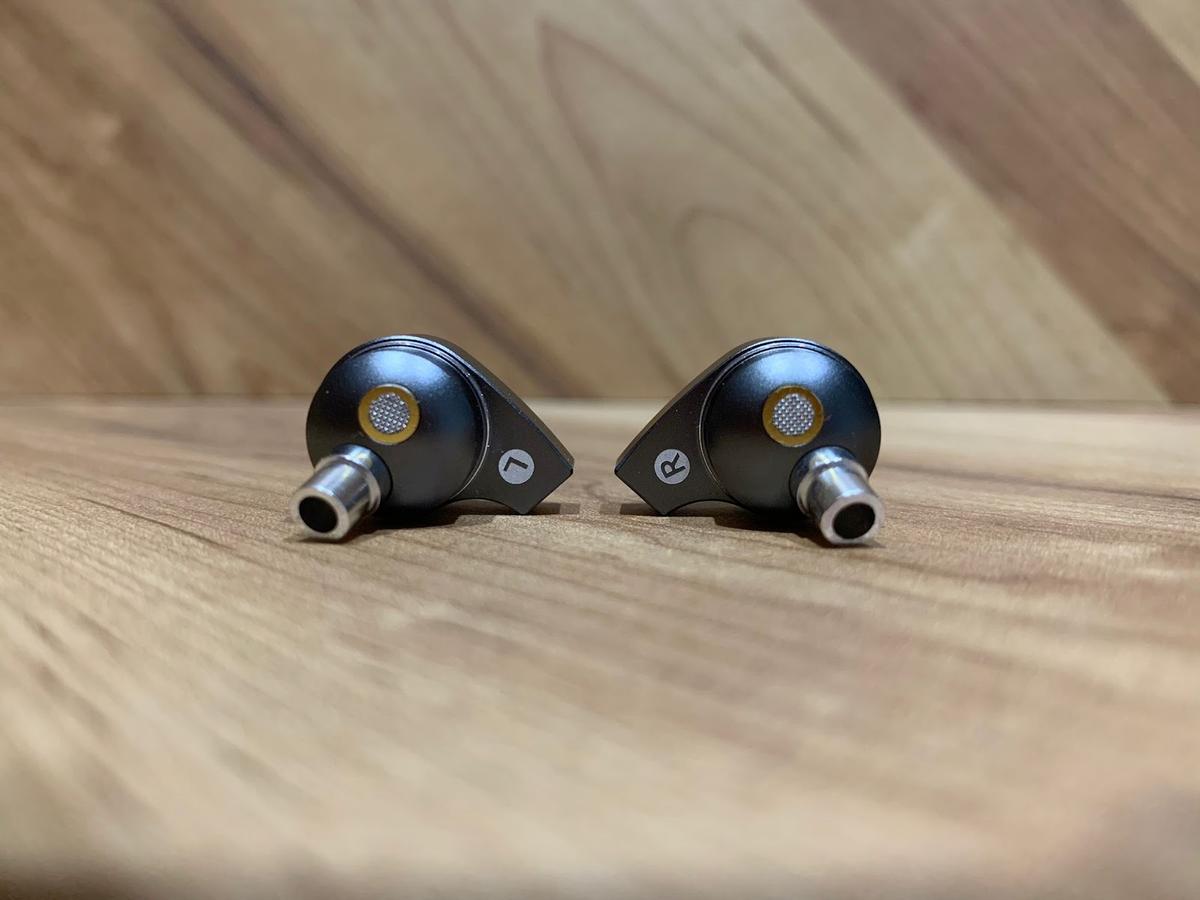
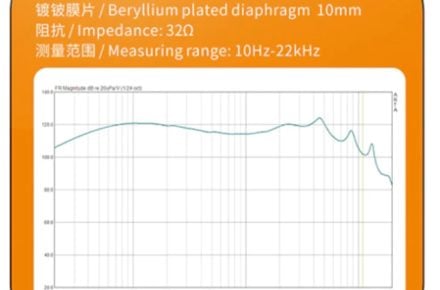
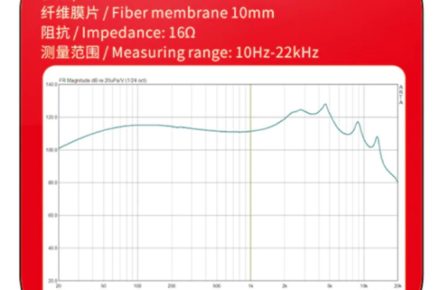
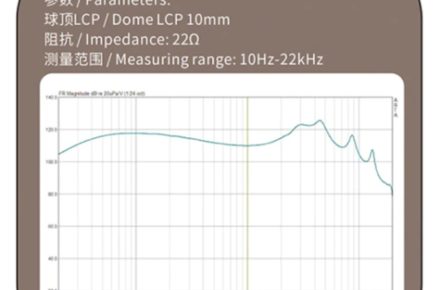
Is there a update on the dome lcp and beryllium drivers?
Hi Sir/Mdm
Sorry for the late reply, have been busy with other IEMs lately. Have just received the LCP and bery drivers and from brief listening, the LCP is a U shaped sound with textured bass. The beryllium driver on the other hand is brighter and boosts the midrange/lower treble.
Great review thanks
Which driver is the technically best?(details, soundstage wideness ,separation)
Hi Sir/Mdm
I would say probably the LCP/beryllium ones give the better technical performance. The fibre one has the poorest technicalities and goes for an analogue feel.
But even with those, the Smabat Proto is still a single DD set at the end of the day, and in general, the multi BA/hybrids at the same price point will have better technicalities (if that is your priority).
Though in general, the multi BA/hybrids may suffer from timbral/coherency issues at the budget segment.
thanks
yes i like more technical and natural sound like ebx21 or mojito fltearbud
can you recommend any multi BA/hybrids that has better technicalities ?(under 150 dolar)
You can check out the TRI Starsea – it has great technicalities. Has 4 tuning options from U shaped to neutral, so quite versatile. It has low impedance (9 ohm) so it needs a source with preferably < 1 ohm output impedance, but otherwise can be a proficient stage monitor.
Thanks for recommendation.i will probably buy this inear.
You say is this starsea inear buds technically(details,wider soundstage) than smabat proto ( With LCP/beryllium) this answer will enough for my entery bud inear after using only flat earbud for 10 years.
Earbuds (if you mean flathead earbuds) will still have better soundstage than IEMs in general, due to the transducer being outside the ear canal. So that is one advantage earbuds have over IEMs.
Though generally, due to the lack of seal, earbuds are weak in sub-bass and isolation. There are exceptions like the SMABAT ST10S Black Gold which employ a labyrinth acoustic system to boost the sub-bass, but IEMs will still beat earbuds in sub-bass and isolation most days of the week.
thanks
can you compare between proto(with LCP/beryllium) and tri starsea?(soundstage wideness ,detail amount ,resolution and seperation)
TRI Starsea wins in these areas. In fact Starsea is one of the more technical multi driver/hybrid IEMs at the $100 USD region.
thanks
can you recommned better technical iem up to 200 dollars?maybe i can save money to buy.
thanks
can you recommend better technically iem than starsea upto 200 dollars?maybe i can save money to reach that level
If you can save up a bit more, do read about the LZ A7. I have seen it at $230 USD during sales on Aliexpress.
Basically, it is a very technical IEM with great imaging, instrument separation, microdetails etc. It has 10 tuning options, so it is very versatile, can be anything from V shaped to neutral.
It is basically a bigger and better version of the TRI Starsea, and does all departments better.
i asked ae seller to keep winter seller price for lz a7 .so i will save money(for a month or little more time) and will buy lz a7 (230 dolar).thanks for recommendation
can you give flat earbud example similar(i have m2s pro superone driver , mk2 , and had mojito and masya ) technical and soundstage wideness example to lz a7
Congrats, look forward to your LZ A7 impressions when you get it.
The NiceHCK EBX21 is a very technical high end earbud that is neutral bright. It has resolution that can compete with some IEMs, but it lacks in bass and can be a bit fatiguing in the treble.
The Yincrow RW2000 is my current endgame earbud, it is a warm neutral set with excellent timbre and technical performance. Soundstage is very good. There is a small 3 khz peak that some may be sensitive to (upper midrange).
thanks for you info
what can you say technically where is lz a7 with earbuds.very behind or same (detailes,soundstage wideness) with iems you listened like ebx21 or masya mijito ..
.can i get earbud totl with lz or only 1k proce iem can get same technical performance?
Most IEMs will lose to earbuds in soundstage itself, as the earbuds have the transducer outside the ear canal. But earbuds (in general) will not have a good seal and most are lacking in sub-bass. Double edged sword as such. Earbuds are closer to open backed headphones than IEMs actually.
Other than soundstage, the LZ A7 is actually a very technical IEM that beats most midfi earbuds in details, instrument separation and imaging. It beats my EBX21 and Yincrow RW2000 in technicalities for sure (other than soundstage).
In general, earbuds are much cheaper than IEMs.
Earbuds start at $1 USD eg Vidos, and even sub $20 can give decent sound. Midfi earbuds go at $50 – 100 USD, and TOTL earbuds are $100 – 300 max.
For IEMs on the other hand, midfi is around the $300 – 500 mark and TOTL IEMS can be 10 times more than a TOTL earbud.
So for price to performance ratio, earbuds are the winner in my book.
thanks for your asswers.and recomendation.they are helpful
hi
maybe i will not save to lz a7 and i can buy starsea but source low ohm make me confuse.
can you recommend cheap dac amp for suitable starsea low impadance .can i listen from my smartphone (samsung m21) ? or usb dongles will be suitable ? sorry i am newbe this subject. starsea is price performance for me.
Source matching is very very important for low impedance IEMs such as the Starsea: https://www.headphonesty.com/2019/04/headphone-impedance-demystified/#:~:text=Pairing a headphone with an,driver control (damping factor).
So based on this “rules of eights”, for an IEM, its impedance is divided by 8, that is the maximum value for the source output impedance that should be paired. Ie if you have a 32 ohm IEM, if this is divided by 8, then ideally a maximum 4 ohm output impedance for the source is the highest that you should be accepting for output impedance, so as not to affect sound quality.
For the Starsea, the reported output impedance is 9.5 ohms (which is considered low), so 9.5 divided by 8 means 1 .19 ohm is the max source output impedance you should accept.
Higher output impedance gear may affect the frequency curve of the Starsea, I find it skews towards the upper frequencies and makes the sound brittle and thin and basslite as such.
You should look for a source that has 1 ohm or less output impedance. The Tempotec Sonata HD Pro (I bought mine at $27 USD) is very suitable as a dongle, it is dead neutral and has very low output impedance with no hiss.
thanks but being limited to use with only dongle i have also zishan z3 with 994 discerete oamp that sound better than sonata hd pro(i had ) and also my smarphone and tablet has enough good sound i cant understand why tri use that low impadance .this limited use amp dac makes me not buy starsea
i may think again proto for great versality.can you say proto(with better driver) is %75-80 of starsee in technical aspect or difference is like night and day ?
I do think even with the aftermarket drivers on the Proto, the Starsea still have better resolution and soundstage, and it is quite obvious. Can’t really give a 75% figure or some other figure, but it is apparent enough.
If soundstage is a priority, maybe u can check out the IKKO OH10. It is a V shaped set with nice bass and big soundstage.
The original TRI I3 (non pro version), is a tribid (1 DD + 1 BA + 1 planar), which is hard to drive (due to the planar), but has a huge 3D soundstage akin to earbuds. It isn’t very detailed though, but is quite smooth.
thanks again
Is there anything that’s better than this set with Berylium driver? More neutral for specific, I need neutral hmm…
Hi Sir/Mdm
If something better for a neutrally tuned IEM, I would recommend the DUNU Titan S.
It is neutral-bright, and there aren’t that many budget IEMs that are tuned neutralish actually (most are V shaped or harmanish). Titan S has quite good technical performance and a natural timbre too.
I googled it but it still has the peak at 3kHz to 5kHz. It’s still somewhat harman tho. Well.. I may pick up the Smabat. The problem is the stores are all ran out of Beryllium driver lol
As a Vietnamese teenager 50$ is expensive for me. For just some reasons all of these audio company just don’t want their devices sounds neutral even tho the need for it is high. Like a creator like me
Yeah unfortunately the beryllium driver does seem to be sold out at most places.
I guess some other sub $50 USD sets to consider that are somewhat neutral would be the Tin T2 (original; not the Plus/Evo T2). Or the HZSound Heart Mirror is also neutral-bright.
The Smabat beryllium is not exactly neutral and is a bit bright too.
Perhaps another alternative is to EQ an IEM that you already have to be somewhat neutral, if you are open to using EQ. Some lower quality drivers may distort with overly robust EQ though, so YMMV.
Woah Tin T2 seems to be amazing and is even sold at 35$ in my country. I’ll definitely order that. Heartmirror availability seems off to me. Thanks for your recommendation! I’ll give a feedback if I got one next month. So happy ^-^
Hope you like the Tin T2, Vipxpert. Look forward to your impressions!
I gotta say Tinhifi T2 is pretty awesome, and it’s a 4-in-one IEM
– By default, u have something that lacks bass and quite a lot of treble
– Blocking front vents and you got a huge bass boost and it’s a sound signature that’s exactly the same with KZ AS10
– Blocking back vents reduce bass even further
– Blocking both back and front vents (galaxy mod) creates something that sounds very balanced. Good bass and treble. This really hyped me for days. Even tho it still wasn’t perfect, it’s better than any earphones out there I’ve ever heard.
This’s also the first earphone ever that I can push to max volume without hurting my ears.
Durability is awesome, I wear it sleeping overnight for several days without being worried
After a long while, I look at the graph on Github
https://github.com/jaakkopasanen/AutoEq/tree/master/results/crinacle/harman_in-ear_2019v2/Tin%20HiFi%20T2%20(galaxy%20mod)
Then I Equalized it to flat on raw measurement and it was perfect. Now I wonder if there’s any IEM on the market that’s flat on raw measurement. I’ve found one and it’s too expensive and dropped treble lol (Shure SE535).
Also thank you so so much for making me able to approach such an amazing IEM. That helped me so much X))
Uhm.. So the website was lagging and I’ve just dropped a whole long review that I’ve written so I’ll write it shortly about the Tin hifi T2
It lacks bass, mid sounds dark due to the lack of 2kHz
Treble is kinda messy, it makes u feel like your head is being burnt after n hour of use
Not enjoyable but the most neutral budget IEM out there I’ve seen. Can open max volume without hurting ears.
The build feels luxurious and all that was probably enough for the price. Thanks for the recommendation hehe